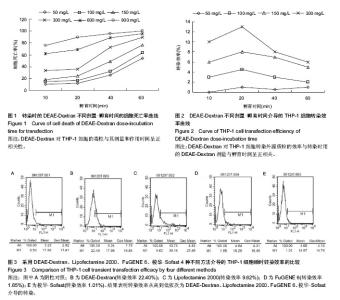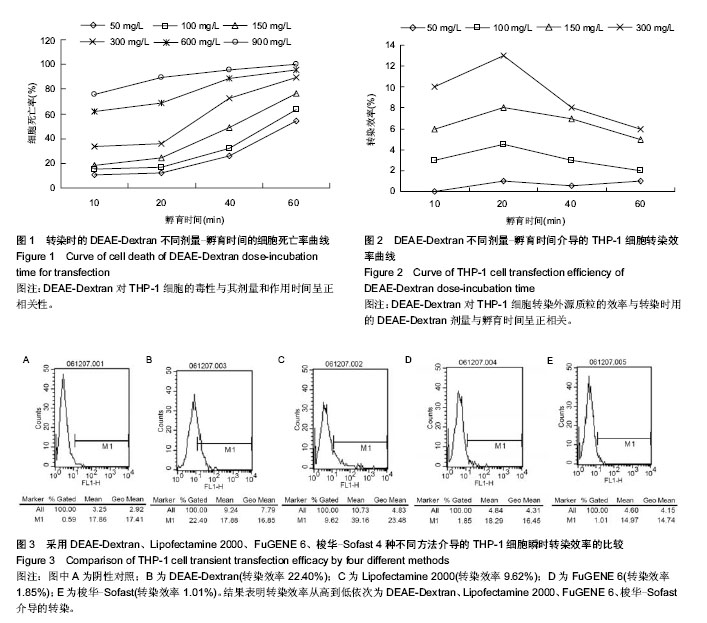| [1] Liu C,Dalby B,Chen W,et al.Transient transfection factors for high-level recombinant protein production in suspension cultured mammalian cells.Mol Biotechnol.2008;39(2): 141-153.
[2] Whitt M,Buonocore L,Rose JK.Liposome-mediated transfection Curr Protoc Immunol.2001;10:10-16.
[3] Smale ST.DEAE-dextran transfection of lymphocyte cell lines. Cold Spring Harb Protoc.2010;2010(2):pdb.prot5373.
[4] Templeton NS.Nonviral delivery for genomic therapy of cancer. World J Surg.2009;33(4): 685-697.
[5] Lonez C, Vandenbranden M, Ruysschaert JM.Cationic liposomal lipids: from gene carriers to cell signaling. Prog Lipid Res.2008; 47(5): 340-347.
[6] Yamamoto A, Kormann M, Rosenecker J, et al. Current prospects for mRNA gene delivery. Eur J Pharm Biopharm. 2009; 71(3): 484-489.
[7] Valenzuela M, Glorieux C, Stockis J, et al. Retinoic acid synergizes ATO-mediated cytotoxicity by precluding Nrf2 activity in AML cells. Br J Cancer. 2014; 8: 380.
[8] Huang HL, Hsieh MJ, Chien MH,et al. Glabridin mediate caspases activation and induces apoptosis through JNK1/2 and p38 MAPK pathway in human promyelocytic leukemia cells. PLoS One. 2014; 9(6):e98943.
[9] Liu M, Li W, Larregieu CA,et al.Development of Synthetic Peptide-Modified Liposomes with LDL Receptor Targeting Capacity and Improved Anticancer Activity. Mol Pharm.2014; 11(7):2305-2312.
[10] Xiong Q, Yang Y, Wang H,et al.Characterization of miRNomes in acute and chronic myeloid leukemia cell lines. Genomics Proteomics Bioinformatics. 2014; 12(2):79-91.
[11] Trojanowicz B, Ulrich C, Seibert E,et al.Uremic Conditions Drive Human Monocytes to Pro-Atherogenic Differentiation via an Angiotensin-Dependent Mechanism. PLoS One.2014; 9(7): e102137.
[12] Moradi Sarabi M, Doosti M, Einollahi N, et al.Effect of Eicosapentaenoic Acid on the Expression of ABCG1 Gene in the Human Monocyte THP-1 Cells.Acta Med Iran.2014; 52(3): 176-181.
[13] Du J, Huang Y, Yan H,et al. Hydrogen sulfide suppresses oxidized low-density lipoprotein (ox-LDL)-stimulated monocyte chemoattractant protein 1 generation from macrophages via the nuclear factor κB (NF-κB) pathway. J Biol Chem. 2014; 289(14): 9741-9753.
[14] Liu HY, Cui HB, Chen XM,et al. Imbalanced response of ATP-binding cassette transporter A1 and CD36 expression to increased oxidized low-density lipoprotein loading contributes to the development of THP-1 derived foam cells. J Biochem. 2014; 155(1): 35-42.
[15] Yang JB, Duan ZJ, Yao W, et al. Synergistic transcriptional activation of human Acyl-coenzyme A: cholesterol acyltransterase-1 gene by interferon-gamma and all-trans-retinoic acid THP-1 cells. J Biol Chem.2001;276(24): 20989-20998.
[16] Maeß MB, Wittig B, Cignarella A,et al. Reduced PMA enhances the responsiveness of transfected THP-1 macrophages to polarizing stimuli.J Immunol Methods. 2014; 402(1-2):76-81.
[17] Wang Q, Cheng F, Zhang W, et al.Infection of recombinant adenovirus Ad5F35-IL-12 in different kinds of human mononuclear macrophages.Xi Bao Yu Fen Zi Mian Yi Xue Za Zhi. 2013;29(2):113-117.
[18] Li L, Zhang AH, Liu LB,et al. [Effect of down-regulating mll-af9 gene expression on proliferation of acute monocytic leukemia cell line THP-1].Zhongguo Shi Yan Xue Ye Xue Za Zhi. 2008; 16(2):254-257. |

